You can whip up this savory and delicious haydari, or Turkish yogurt dip, in ten minutes flat (or five if you move fast)! This flavorful appetizer is excellent on toast, pita bread, sliced cucumbers, or with any raw vegetables.
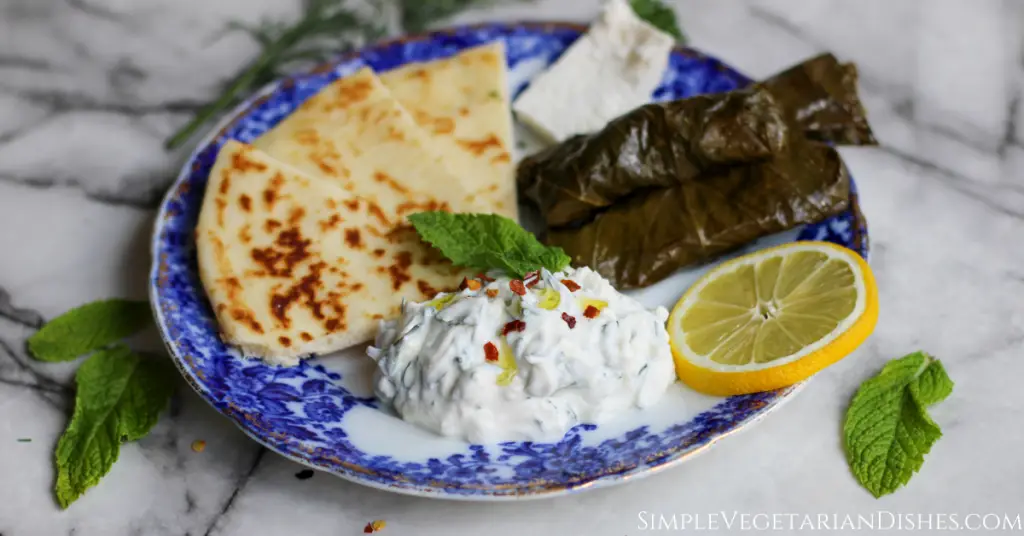
You can easily double or triple this recipe if you are hosting company or large family gatherings. You can make it ahead of time and leave it in the fridge until everyone is ready to eat.
What is Haydari?
Haydari is a dip made with strained yogurt as the base. It is served as a common mezze throughout the Mediterranean. Mezzes are small dishes served together as appetizers, or they could also be the whole meal if you have enough courses. They are similar to the Spanish tapas, for instance.
Other common mezzes include hommus, baba ghanoush, taboule salad, falafels, dawali (stuffed grape leaves), tzatziki, and Arabic salad. (You can try my other recipes for a delicious mezze feast!)
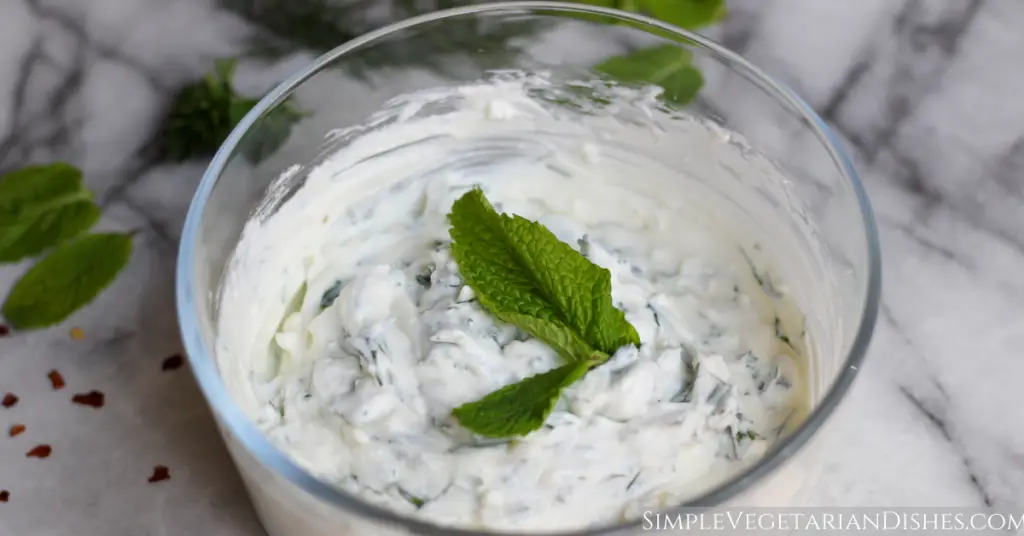
Are Haydari and Tzatziki the same thing?
Not quite, although the two dishes are very similar. Tzatziki has shredded cucumber mixed right in, and it often has lemon juice added in as well. This makes it lighter and more refreshing, while haydari is richer and more tangy. However, the base of strained yogurt, salt, olive oil, garlic, and fresh herbs remains the same.
Adaptations
A more traditional haydari recipe calls for a base of suzme yogurt, also called labneh, which is thick and tangy. You can buy plain yogurt and strain it through a cheesecloth overnight, if you wish, for a similar result. Greek yogurt seemed like an easy and quick alternative, not to mention a delicious one.
For more traditional haydari, people often use cheeses called beyaz peyniri or ezine. Feta is very similar, and it is a good alternative (if you like the flavor), since it is easily found in grocery stores. If you find feta too strong, you can always try using cream cheese instead to thicken the dip and add some richness and salt. Similarly, some people have used mayonnaise instead.
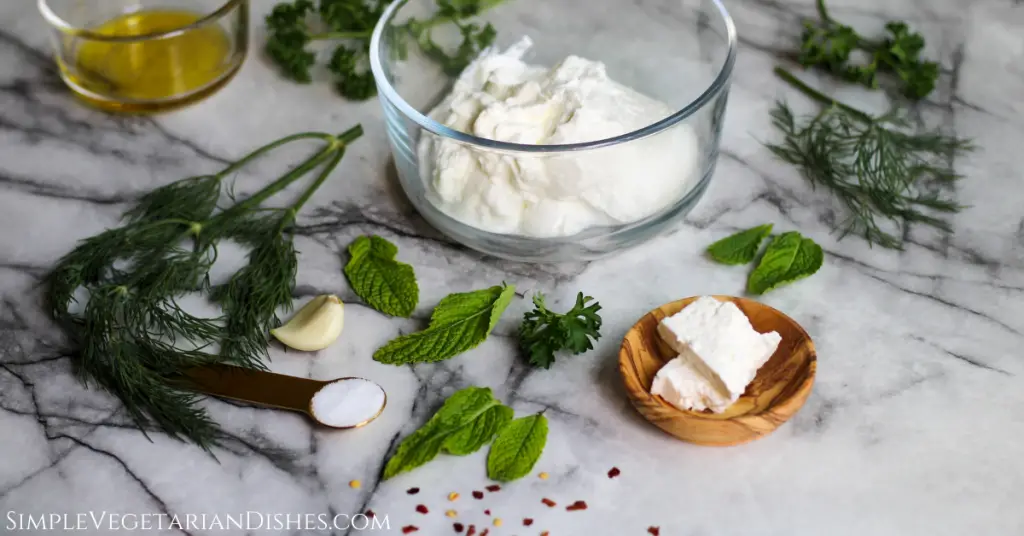
What is labneh?
Depending on how long it is processed, labneh can either be a yogurt or a soft cheese. Traditionally, people make labneh using sheep milk or goat milk. Occasionally, people make it with camel milk. Now, people increasingly use cow milk due to its high year round availability.
People have eaten labneh in the Middle East for thousands of years. Ancient Egyptian documents mention labna, which appears to be another name for the same thing.
The hot climate of Egypt spoils fresh milk quickly. For this reason, people preserved milk by fermenting it and turning it into yogurt.
Some claim that the Hebrews that Moses led out of Egypt carried the recipe for Egyptian labneh into the Middle East.
People strain labneh for about 12 hours or so to get it to the consistency of strained yogurt, Greek yogurt, or Turkish suzme yogurt. By continuing to strain it longer than that, for 24 hours or so, they transform it into a soft cheese.
Nomadic peoples in the deserts of the Levant, including the Bedouins, took this labneh, strained it further by pressing it between heavy stones, and dried it in the sun. They sometimes used herbs to help preserve it. By this process, they produced transportable cheese that kept much longer in the heat.
In addition, people sometimes preserve dried balls of this labneh cheese in olive oil. This allows them to store it for over a year.
You can read more about different variations of labneh here.
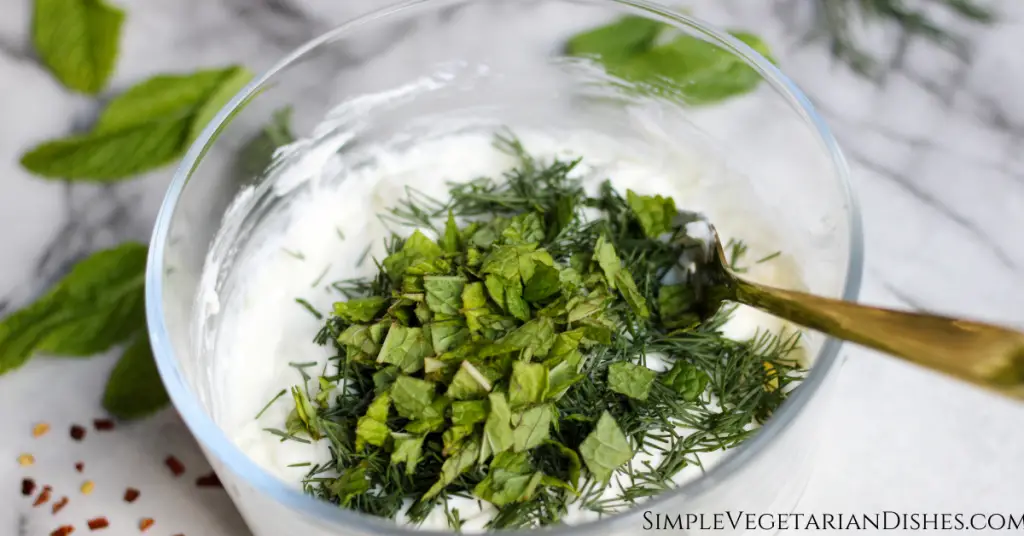
Haydari Ingredients
Before you begin, you will need:
Edible ingredients
- 1 cup of plain Greek yogurt
- 2 tsp feta cheese (you can substitute cream cheese if you don’t like feta – just something to make it richer and saltier)
- 1 Tbsp olive oil
- 1/4 tsp salt
- Fresh dill, to taste (I used one large sprig)
- Fresh mint, to taste (I used 8 large leaves)
- 1 large or 2 small cloves of fresh garlic
- Fresh parsley, to taste (I used two small sprigs – this left me with an equal amount of dill, mint, and parsley)
- Crushed red pepper flakes, to garnish (optional)
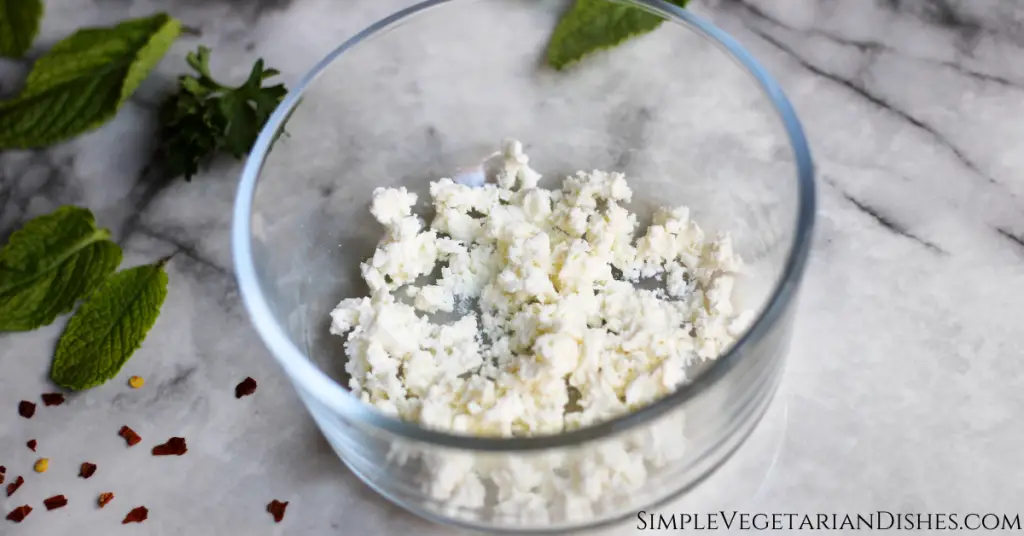
Tools
- A garlic press (or allow extra time for mincing)
- A knife and cutting board
- Measuring cups and spoons
- Mixing bowls
- A fork or something to mash the feta cheese with
- Silicone spatulas to transfer the seasoning to the Greek yogurt
- Something to stir with (I just used the same fork from mashing)
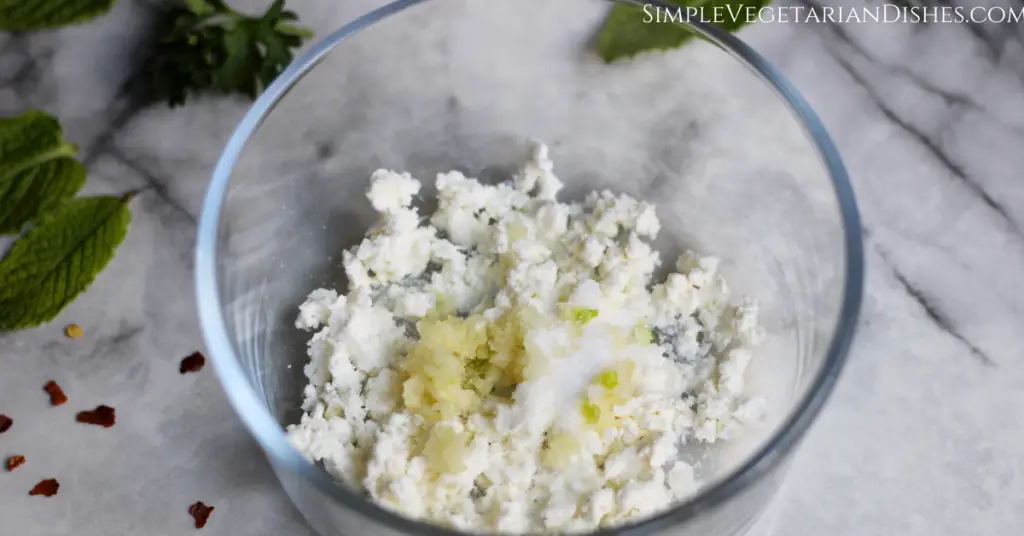
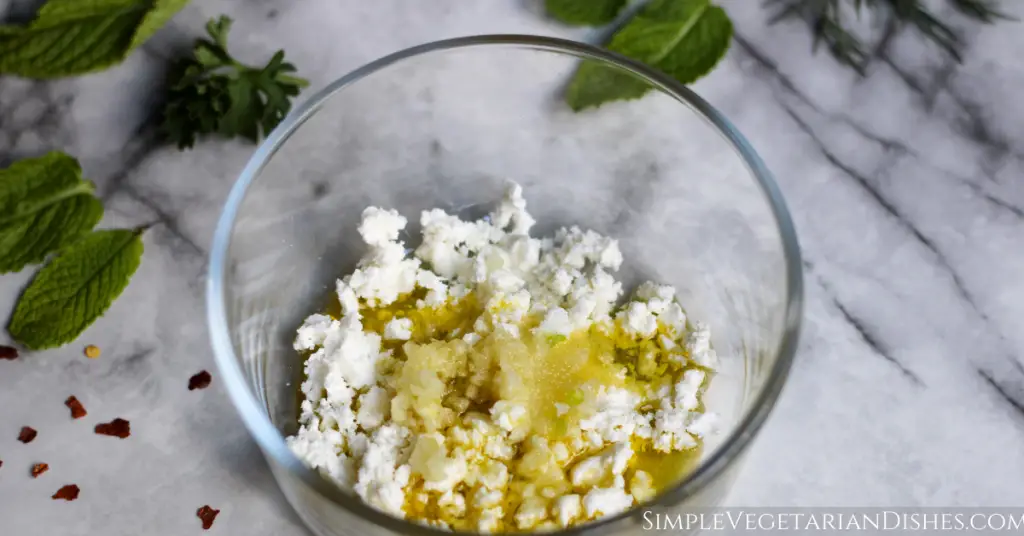
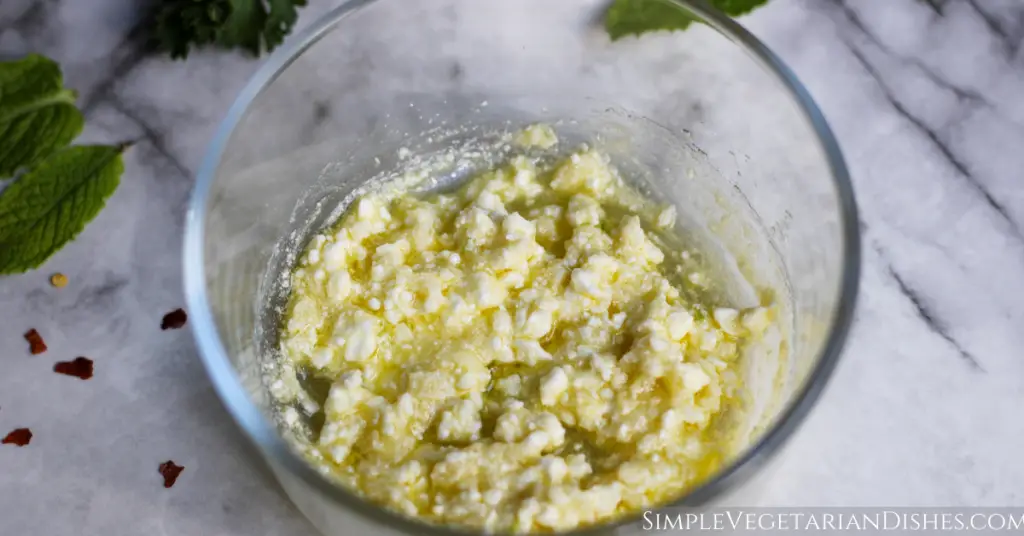
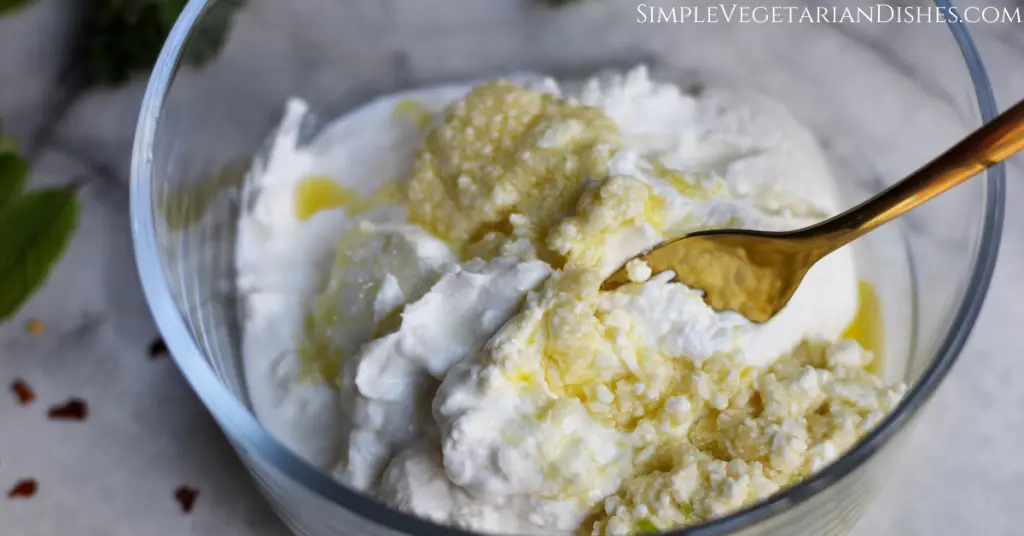
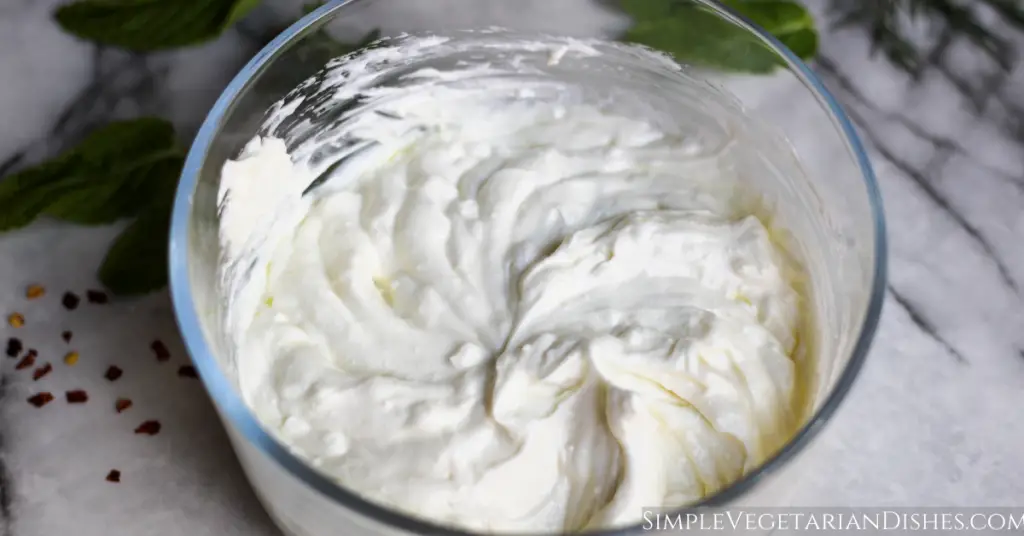
How to Make Haydari Turkish Yogurt Dip
- To begin, if your feta cheese is in a block (or large crumbles), use a fork to mash it into smaller crumbles.
- After that, peel and trim the end from your clove(s) of garlic. Then, mince or use a garlic press and add the garlic to the feta.
- Now, measure out and add the salt.
- Then, measure out and add the olive oil. Stir to combine.
- Once your seasoning is combined, add it to the Greek yogurt. Blend well.
- Next, wash and chop your fresh herbs. I used equal parts dill, mint, and parsley, but feel free to use just one, any two, or whatever herb combo you would enjoy.
- Finally, stir the herbs into the yogurt dip and it’s done! At this point, taste it and see if you want more herbs. After that, you can garnish with additional olive oil, lemon juice, crushed red pepper flakes, or anything you want. Serve with pita bread, sliced cucumbers, or any mezze you want. Enjoy!
Pin it for later!
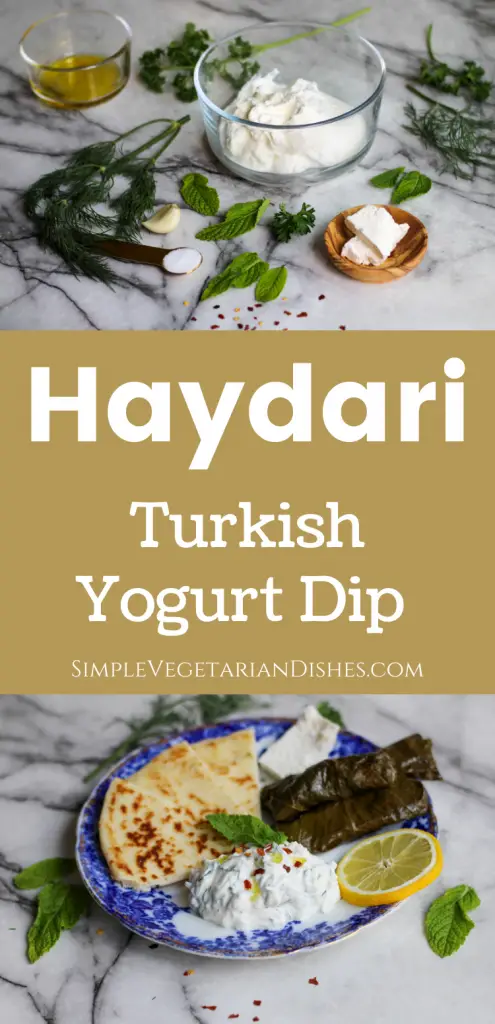
Variations on this Turkish Yogurt Dip
As is the case with most recipes, you can add any seasonings you’d like to this dish. Shredded cucumber, Aleppo pepper flakes, harissa seasoning, and pine nuts would all go well in this dish.
Some people also add butter for a richer dip.
If you found this article helpful, please consider joining my email newsletter community for new recipes delivered straight to your inbox!
Related Mezze Posts
If you liked this recipe, try these as well for a Mediterranean feast!
- Taboule
- Dawali (Stuffed Grape Leaves)
- Arabic Salad
- Hommus
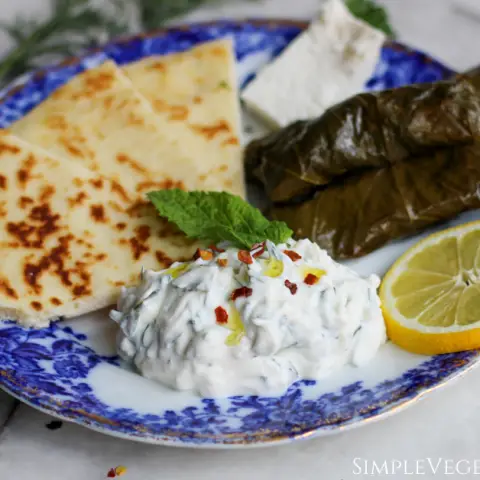
Haydari - Turkish Yogurt Dip
You can whip up this savory and delicious haydari, or Turkish yogurt dip, in ten minutes flat (five if you move fast)! This flavorful appetizer is excellent on toast, pita bread, sliced cucumbers, or with any raw vegetables.
Ingredients
- 1 cup Greek yogurt
- 2 tsp feta cheese
- 2 cloves garlic
- 1/4 tsp salt
- 1 Tbsp olive oil
- Fresh dill, to taste (I used one large sprig)
- Fresh mint, to taste (I used 8 large leaves)
- Fresh parsley, to taste (I used two small sprigs)
- Crushed red pepper flakes, to garnish (optional)
Instructions
- To begin, if your feta cheese is in a block (or large crumbles), use a fork to mash it into smaller crumbles.
- Next, peel and trim the end from your clove(s) of garlic. Mince or use a garlic press and add the garlic to the feta.
- Then, measure out and add the salt.
- Now, measure out and add the olive oil. Stir to combine.
- Once your seasoning is combined, add it to the Greek yogurt. Blend well.
- Next, wash and chop your fresh herbs. I used equal parts dill, mint, and parsley, but feel free to use just one, any two, or whatever herb combo you would enjoy.
- Finally, stir the herbs into the yogurt dip and it's done! You can garnish with additional olive oil, lemon juice, crushed red pepper flakes, or anything you want. Serve with pita bread, sliced cucumbers, or any mezze you want. Enjoy!
Nutrition Information:
Yield: 4 Serving Size: 1Amount Per Serving: Calories: 73Total Fat: 4gSaturated Fat: 1gTrans Fat: 0gUnsaturated Fat: 3gCholesterol: 4mgSodium: 182mgCarbohydrates: 3gFiber: 0gSugar: 2gProtein: 6g

Leave a Reply